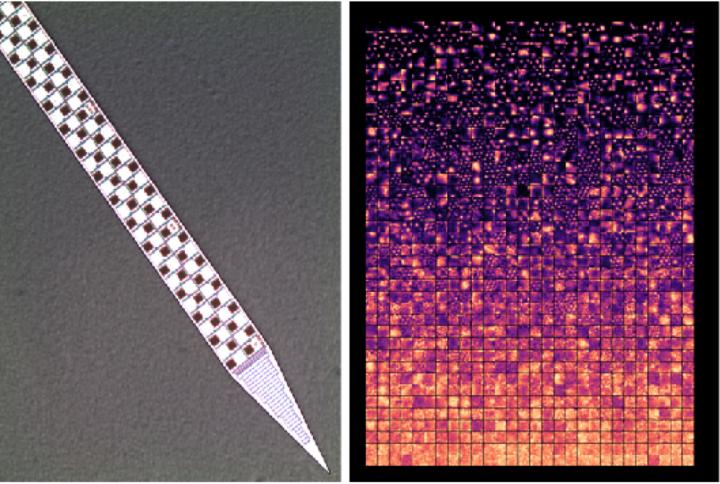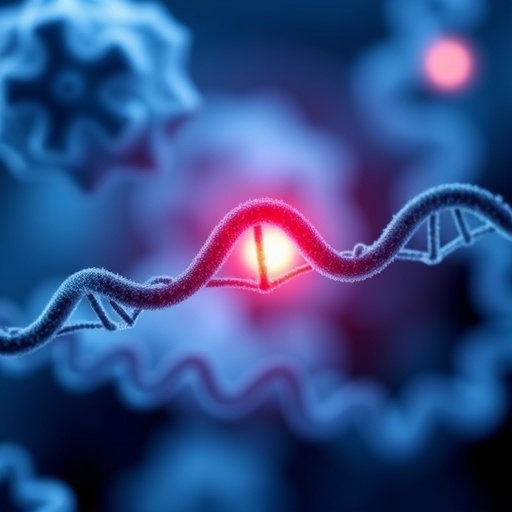KiloNeurons project allows researchers to tool up from neurons to cognition

Credit: Photo: Kavli Institute for Systems Neuroscience
Humans have long wondered about the origins and workings of the mind. How does living matter generate memories, thoughts, imagination, the ability to plan? How these high-level functions are created from activity in brain cells remains one of the greatest mysteries of life. Current advances in neuroscience may finally unravel the secret of how higher cognitive functions emerge from the brain.
With a Synergy Grant funded by the European Research Council (ERC), investigators at the Kavli Institute for Systems Neuroscience at the Norwegian University of Science and Technology and the Edmond and Lily Safra Center for Brain Sciences and the Racah Institute of Physics at the Hebrew University of Jerusalem aim to explore the neural basis of cognition through focused study of one well-defined cognitive function – the ability to map our own location in space.
“There is an excitement, a sense of revolution in systems neuroscience today,” says Edvard Moser, Founding Director of the Kavli Institute for Systems Neuroscience and Co-Director of Centre for Neural Computation.
After decades of studying single cells, wondering what kind of joint dynamics they take part in, neuroscientists are currently experiencing a total transformation of their field of study. A breakthrough in technology has made this possible.
“At the Kavli Institute for Systems Neuroscience, we are now replacing the old single-cell recording systems with high-site-count Neuropixels silicon probes and portable 2-photon microscopes,” he said.
These tools, developed within the last year or two, allow Kavli researchers to record and visualize simultaneous activity from thousands of neurons interacting with each other during cognitive operations.
“The technological advancement is not just a linear summation of information from individual brain cells. By enabling studies of how large populations of neurons work together, it brings our inquires to another functional level where we can ask how cells collaborate, rather than looking for the properties of individual cells,” Moser said.
“Our brains generate a broad spectrum of higher cognitive functions that make up our intellectual capabilities. These brain functions emerge from the interactions between thousands of cells interconnected in large neural networks. This is the level of granularity from which we are now recording,” he says.
However, experimental measurements alone are not enough. Experiments must be guided by theoretical models of how neural networks create their outputs, which can in turn be tested experimentally. It is a matter of testing whether the map fits the landscape and of understanding the landscape through the map.
Some of the most promising theories in neuroscience during the last 40-50 years are called continuous attractor network (CAN) theories. Attractor network theories predict how neural networks in the brain operate through specific connections between cells in the network.
“CAN theories evolved at the Hebrew University in Jerusalem, and there is still no place on earth that better understands and moves these theories forward,” Moser said. “Yoram Burak is a member of the computational neuroscience community at the Hebrew University and he is, in my opinion, the strongest theoretician of his generation in this field.”
The ERC-funded research project KiloNeurons builds on the synergy created by merging approaches from theoretical physics with neurobiology and psychology. Pairing the most promising theory with the best-mapped higher cognitive functions provides a unique opportunity to explore how the brain works.
The ERC funding provides a unique opportunity to understand how the brain works, the researchers say.
“Our goal is to uncover how a cognitive brain function is generated through interactions between thousands of cells in the cortex,” Burak says. Attractor network theories propose that activity patterns in the brain are formed through specific connections within neural networks. In the case of spatial orientation, attractor networks result in activity patterns that enable a sense of location and direction.
“Our point of departure is the higher brain function that provides us with a sense of location and supports navigation. CAN theories are highly developed for the brain systems that we use to find our way; we know the elements and properties of these systems, such as the grid cell; and the behavior of wayfinding is easy to measure. The project has all elements in place for breakthrough mechanistic insight to be realized,” Moser said.
“Understanding attractor networks is important for any neuroscientist who wants to understand how activity patterns are generated in the brain. Attractor networks operate throughout the brain in many different systems, so demonstrating their existence, and finding out how they operate, is key to a broad understanding of cognition,” he said.
It will also help us uncover what goes wrong when cognitive functions are compromised in neurological conditions, as in Alzheimer’s disease, or in psychiatric syndromes – which will be a step towards exploring the potential for new therapies.
###
Media Contact
Rita Elmkvist Nielsen
[email protected]
Original Source
https:/




